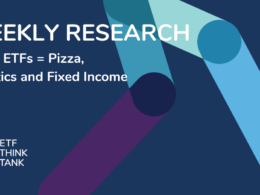Last week, Invesco announced the planned acquisition of Oppenheimer Funds following the successful integration of Guggenheim ETFs. We have benefited from the consolidation of the industry and we’re not surprised by the news. We expect additional accretive deals to be structured and lead to an acceleration of the growth and scalable profitability.
This news also inspired us to research the history of mergers and acquisitions within the ETF ecosystem. These corporate actions can unlock value, expand distribution, or allow access to new markets. We also found many acquisitions as pure investments. Our friends at Alpha Architect wrote a great piece on ETF M&A a few months back: Understanding the state of the ETF industry through mergers acquisitions and fragility. Our insights into deals that made sense and those that were set for failure are probably also of interest to many investors.
We have compiled our own list of activity which we believe to be comprehensive, but unlikely to be complete. We encourage all the ETF Nerds and ETF Think Tank members to help us catalog all the ETF ecosystem M&A activity.
The TETF.index research team began our deep dive with the activity in 2018:

We have compiled our own list of activity which we believe to be comprehensive, but unlikely to be complete. We encourage all the ETF Nerds and ETF Think Tank members to help us catalog all the ETF ecosystem M&A activity.
2017, Asia Buys in the West, Trading and a Legend Return

2016 & 2015, CBOE Rolls Up & The Old Guard

In 2016, BATS acquired ETF.com and CBOE acquired BATS. These actions put the CBOE on the map for ETFs. Currently, they have 12.8% of US ETF listings. Additionally, in 2016, American Beacon, Hartford, JPM, Oppenheimer, Victory, Virtus, NY Life, and Columbia all made acquisitions of small firms to gain access to ETF growth; a bold move for traditional mutual fund and insurance companies.
2012 through 2014, All about Indexing

Before 2011, the “Big Oneâ€

TETF.index Tracking M&A
There are a number of ETFs that track M&A within the broad market that are designed to produce modest but stable returns through arbitrage. TETF.index tracks the growth unlocked within the ETF evolution and ecosystem from a natural progression of M&A activity. Many private firms spend huge amounts of money to accelerate adoption and the growth of the industry which ultimately are reflected in the industry’s penetration and growth. To that point, we believe that ultimately the “old guard” will have to buy or build to survive. As reflected by the growth, the industry is growing at a remarkable pace (15-20%). Put simply, now that investors have figured out the benefits of compounding growth on a tax-deferred basis, with fewer fees, and with transparency, why will they ever turn backward? What investor who has used an ETF will turn around and swap an ETF for a more expensive, less transparent, and less efficient wrapper? What investor wants to pay more for less?












